|
|
|
|
|
|
Letters home from African American soldiers share details of their separate and unequal treatment in World War I
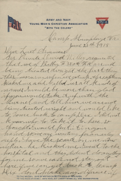
During Black History Month, we have been bringing forward a number of little-known, unique stories about the experiences of African Americans in World War I. Today, we offer a remarkable article, created by Mr. Calvin Mitchell, that gives a broad, insightful overview of the experiences of those 360,000 African Americans who served -- based on their letters home. Mr. Mitchell is Research Associate, and former Assistant Curator of Philately, at the Smithsonian’s National Postal Museum. Click here to read the entire thoughtful article on the African American experience in WWI.
|
Making of the Novel “Anumpa Warrior: Choctaw Code Talkers of World War I”

Sarah Elisabeth Sawyer had always known the story of the handful of Choctaws who used the tribal language to save lives and help bring a swifter end to the First World War. However, over the years she discovered that this "fantastic and monumental part of our American and military history was still unknown to the public." So she decided to write the novel Anumpa Warrior: Choctaw Code Talkers of World War I. to make the story more accessible. But when Sarah began educating herself on WWI doing research for the novel, she quickly "learned how little I knew about it beyond the black and white Sergeant York movie, a staple in my home when I was growing up." Click here to read more about the research that spanned years and continents to help bring the story of the Choctaw Code Talkers alive again in 21st Century America.
|
From the World War I Centennial News Podcast
A Teacher on Teaching WWI:
Michael Sandstrom

On February 1st's edition of the WWI Centennial News Podcast, Episode 108, host Theo Mayer spoke with high school teacher and National History Day's Legacies of World War I participant Michael Sandstrom about his experiences teaching history, especially World War I history, to the current generation of high school students. Sandstrom is a Social Science teacher at Chadron High School in northwestern Nebraska, about 20 minutes from the South Dakota border. Click here to read a transcript of the entire interview.
|
The Civil War and Beyond:
the Connection Between Reconstruction and the Great War

On February 8th's edition of the World War I Centennial News Podcast, Episode 109, host Theo Mayer observes that in telling the story of African Americans in World War I, in order to put the history into context, we really need to go back an additional generation to what is known as the Reconstruction Era. With the help of Senator Carol Mosley Braun (right), this episode explores how changes to the U.S. Constitution and in American society set the stage for African Americans to serve gallantly in World War I. Click here to read the transcript of this episode of the podcast.
|
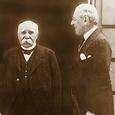
Episode #110
Highlights: The League of Nations
Host: Theo Mayer
Wilson Explains The League of Nations - Host | @02:10
A Seat at the Table: Japan - Host | @14:55
Turmoil at the Conference - Mike Shuster | @18:45
Formation of the American Legion - David Rehbein | @23:25
James Reese Europe - Jason Moran | @30:05
Fort Des Moines & Black Medical Officer Training - Doug Fisher | @35:55
Speaking WWI: GI - Host | @43:10
Articles & Posts: The Dispatch - Host | @45:20
|
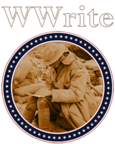
First I Said No
By Mary L. Doyle
When Army veteran Mary L. Doyle was first asked to help write the 100-year-old history of Ft. George G. Meade, a history that began with WWI, she said no.
Primarily a fiction writer, Doyle had only co-authored two works of nonfiction: memoirs of African American women in uniform because she felt compelled to bear witness their untold raw, honest experiences. When she did agree to write about Ft. Meade, she discovered that she had developed a knack for uncovering what had been forgotten.
In this post, Doyle discusses the journey she took to bring 100 years of a rich, diverse history together, a journey in which she discovered African American doctors who volunteered during WWI. Read Doyle's Ft. Meade adventure at WWrite this week!
|
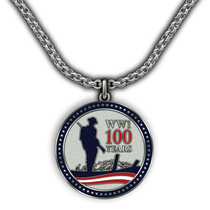
Proudly wearing the WWI 100 Years charm pendant is a fantastic way to let folks serving in the military, along with veterans, know that we still honor those who served our country one hundred years ago. This satin nickel charm, worn on a necklace or bracelet, is a simple, yet meaningful, way to display your pride and remember those who sacrificed throughout our nation’s great history. A portion of the proceeds from the sale of this item goes towards funding the building of the national World War One Memorial in Washington, D.C.
A Certificate of Authenticity as Official Merchandise of the United States World War One Centennial is included.
This and many other items are available as Official Merchandise of the United States World War One Centennial.
|
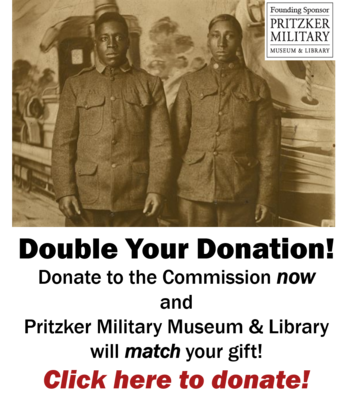
|
|
|
|
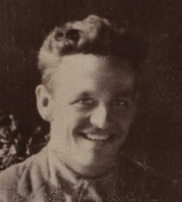
Submitted by: Gerald Hathaway (Grandson}
Joseph Thomas Hughes born around 1895. Joseph Hughes served in World War 1 with the United States Army. The enlistment was in 1917 and the service was completed in 1919.
Story of Service
Joseph Thomas Hughes (1895 - 1933)
By Gerald Hathaway, October 9, 2018
It was a hundred years ago today, or maybe tomorrow, that Pvt. Joseph Thomas Hughes was wounded in action, in France. If today is that anniversary, the casualty was incurred while attacking the Germans for control of Hill 269 in the Meuse-Argonne, 80 kilometers east of Reims, not far from the Belgian and Luxembourg borders. If the hundredth anniversary of his wound is instead tomorrow, he was wounded while successfully defending Hill 269 from being retaken by the Germans. The uncertainty of the date of the wound is due to conflicting reports. After all: the fog of war.
Joseph Thomas Hughes was born in Philadelphia in 1895, of Irish immigrant parents, who met in Philadelphia. His father, Thomas Hughes, died when Joseph was nine years old. When America joined the Great War, Joseph, then not quite 22, said goodbye to Philadelphia and enlisted, on May 5, 1917, reporting at Fort Slocum, in New Rochelle, New York. He was assigned to the newly formed First Engineers, First Division, American Expeditionary Forces. On August 7, he boarded the SS Finland in Hoboken, New Jersey and set sail for Saint-Nazaire, France, arriving August 20, 1917. His ship’s convoy fended off U-Boat attacks.
|
|
|
|
|